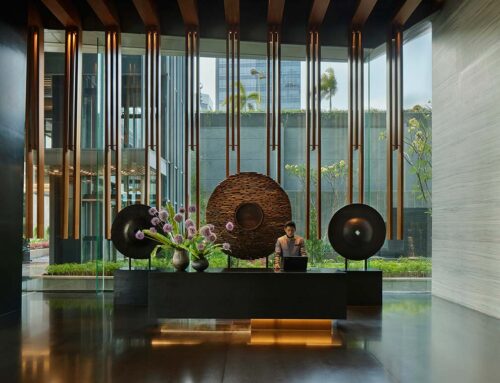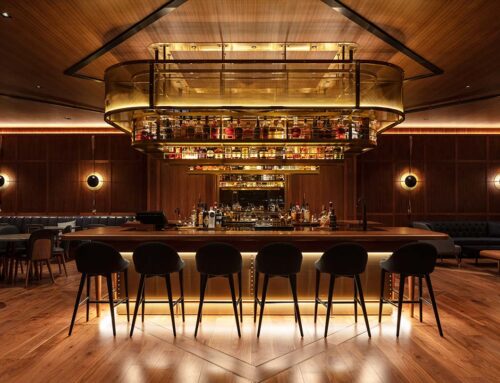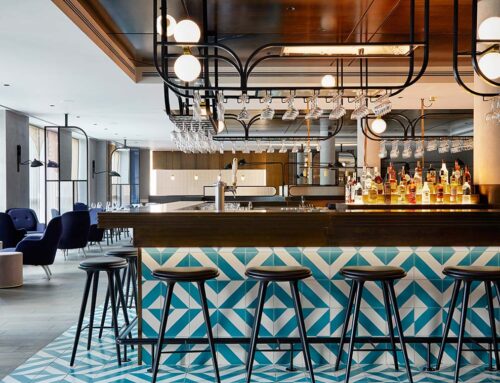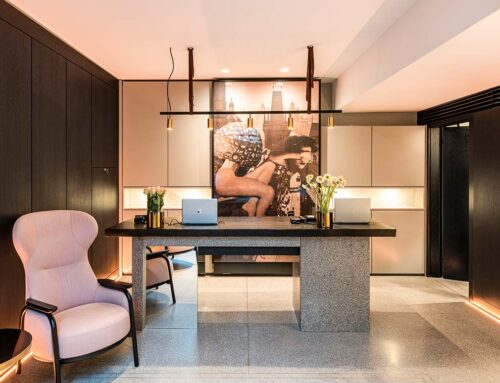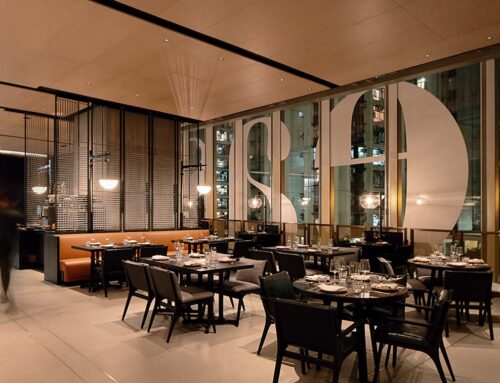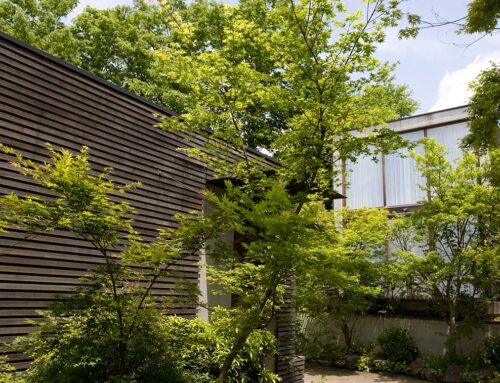HBA creates a delicate design for Four Seasons Kyoto.
Four Seasons Kyoto is located within one of the best-preserved historic cities, with intact palaces, gardens, Buddhist temples and Shinto shrines. Designed to be a haven of quiet dignity and discreet expression, the Four Seasons Kyoto’s design narrative was carefully planned surrounding the 800-year-old Ikeniwa Pond, inviting guests to engage with nature through its blueprint. A rich model of modernism resonates throughout the hotel while carefully maintain traditional Japanese conceptions of architecture.
“At the start of the five-year project, we began working on the design and immediately recognized the tremendous respect and honour the region and Ikeniwa Pond commanded,” said Agnes Ng, HBA partner and lead designer on the project. “Our concept paid respect to both aspects of the property with our understated, graceful design, which had minimalist undertones featuring intricate details. The hotel is meant to be a haven for contemplation – we designed every facet of it to open up to views of Ikeniwa, allowing the design to serve as a window to the pond, never detracting from it.”
Guests are greeted into the hotel by an alluring bamboo forest that leads to a Japanese garden sanctuary. As one of the only cities in the world with four distinct and highly photogenic seasons, Kyoto flourishes with spring cherry blossoms, swaying bamboo in summer, brilliant red autumn leaves, and the blanket of winter snow – each one framed by expansive windows.
Bringing the outdoors to the interior, the vast lobby space seamlessly adapts with every season to evoke constant, yet ever-changing emotions with guests. The use of locally sourced traditional shoji paper screens creates interesting soft shadows as light casts through them. HBA designers used natural Aji stepping stones to pave the ground, reminiscent of a Zen garden.
“The essence of the lobby lies in its simplicity and generosity of its gestures. The harmonious integration of space and environment lends to the importance of the site’s context – the pond,” says Ng. “Large discreet spaces of respite and dramatic linear views to the pond and beyond dictate the lobby space – the design orchestrates a sense a simple elegance, sensuality and discovery that reveals a further focal point to the pond.”
A personal space inspired by tranquillity, the guestrooms at the Four Seasons Kyoto reflect the characteristics of a traditional Japanese house. The quiet and elegantly simple lines of wooden slats greet guests upon entering the space is enhanced by the deliberate shadows cast by the light that sheds through. Fusuma screens decorated with artwork by local echo artists further celebrate the culture. The view to the outdoor sanctuary is framed by oak wood architrave that acts as a centre point, immersing guests in Kyoto’s heritage. Traditional tatami was implemented in a modern way to preserve and respect Kyoto’s tradition by adding a Japanese pattern motif.
A vibrant purple hue is used throughout the design, providing a stately and royal context for the country. Natural edge-carved oak wood flooring enhances the natural Japanese imperial villa experience. Restrooms are a luxurious space for guests to immerse themselves in the calming, soothing effects of water inspired by the pond. Decorative vertical stone walls and a luxurious rain shower create an oasis for guests to relax, simulating a waterfall within a bamboo forest.
Inspired by the natural movement of swaying bamboo leaves, the wedding chapel evokes an emotional response that offers an engaging relationship with nature. The design works to embrace the context between nature and the purity of spaces by framing the views and enveloping the interiors with motifs of bamboo leaves. The undulating structure envelopes around the space, while glass windows provide a frame for the soaring and sunlit spaces.
Designed to be the gateway to the celebration, the staircase offers a modern architectural form – the fusion of contemporary design with traditional skills. The form of the staircase contrasted by the softness of the traditional washi paper partitions creates a characteristic Japanese space that is soft and luminous. Locally sourced washi paper specially designed by local artisan Eriko Horiki, who uses traditional methods in creating traditional Japanese paper, gives an ambient atmosphere through the textures of shadows created by light filtering through. Complemented by the gentle sounds of the trickling water feature, the staircase draws guests to move about the space.
Acting as a theatrical expression of seasons, nature and celebration, the ballroom walls are adorned with locally sourced tapestries and artwork that references delicate bamboo leaves. The show kitchen, designed as a tea house, sits within the space and enhances the traditional Japanese experience with refined design touches. Carpet flooring reflects the pond in another exercise in paying subtle homage to Kyoto’s environment.
The Spa at Four Seasons Kyoto is a haven of Kyo no Iyashi, meaning ‘Kyoto healing’ and features seven treatment and wellness-technology rooms, including a VIP couples’ spa suite. Roji path stepping stones to a waterfall cascading from a stone bridge usher guests into an oasis of calm and tranquillity. The dramatic indoor swimming pool takes its design form from the pond, while a series of Japanese pavilions invite guests to lounge in an intimate setting.
Referencing imperial palace architecture, meeting rooms serve as transitional spaces that offer formal privacy with a reserved, sophisticated touch. The overall simplicity of the space is juxtaposed with intricate carvings demonstrated through cedar timber doors that showcase Kyoto’s seasons.
Project: Four Seasons Hotel Kyoto
Location: Kyoto, Japan
Design Studio: HBA
Photography: Four Seasons Hotel Kyoto
Website: hba.com






















